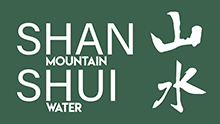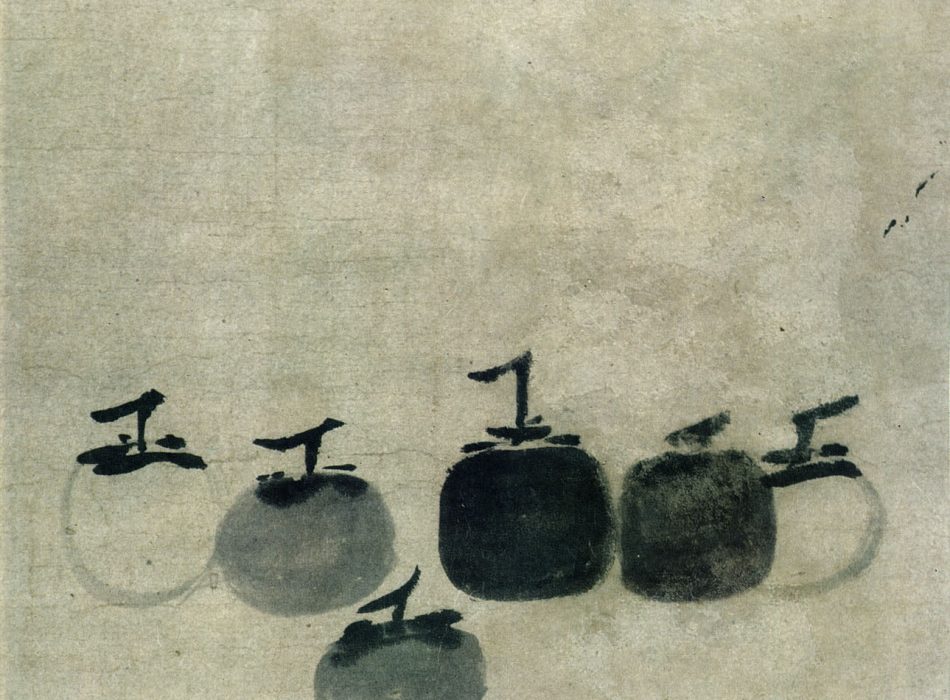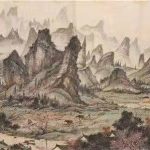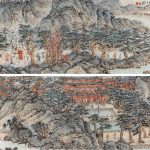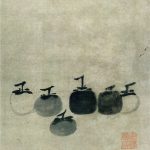Concretion vs. Abstraction in the Painting Tradition of East Asia
By; Thorsten Schirmer
In the East Asian culture a completely independent tradition of painting exists in addition to Western painting that shows a continuous development from its earliest time to present. For more than 2000 years, laws have evolved and preserved in China, formulating a unique alternative to the painting tradition of the west. Chinese painting reached its first early peak in the 4th century A.D. Since the 7th century, it has influenced the neighboring empires Japan and Korea, playing a dominant role there from then on till today. Formulated by the art critic Xie He 谢赫 in six principles 六法, its ground rules were already manifested at the end of the 5th century, which have not lost its validity until now.
They are:
1 Lively atmosphere and expression of the life energy 气韵生动
2 Brushwork structure 骨法用笔
3 Correct depiction 应物象形
4 Right coloring 随类赋彩
5 Composition 经营位置
6 Transmission and copying 传移模写
In which context does this tradition stand to the principles of the concrete and the abstract? On this occasion an attempt to shed light on both terms has to be prefixed. While concretion found a clear definition in the term “objectification”, the word abstraction requires a paraphrase. The Brockhaus Encyclopedia explains abstraction as:
“Scientific method by which specific, for the context essential characteristics are singled out to obtain general concepts and laws referring to a subject.”
The free internet encyclopedia Wikipedia defines abstraction entirely in this sense:
“Abstraction is a process by which concepts are derived from the usage and classification of literal (“real” or “concrete”) concepts, first principles, or other methods. “An abstraction” is the product of this process—a concept that acts as a super-categorical noun for all subordinate concepts, and connects any related concepts as a group, field, or category. (…) Typically, abstraction is used in the arts as a synonym for abstract art in general. Strictly speaking, it refers to art unconcerned with the literal depiction of things from the visible world—it can, however, refer to an object or image which has been distilled from the real world, or indeed, another work of art. Artwork that reshapes the natural world for expressive purposes is called abstract; that which derives from, but does not imitate a recognizable subject is called nonobjective abstraction.”
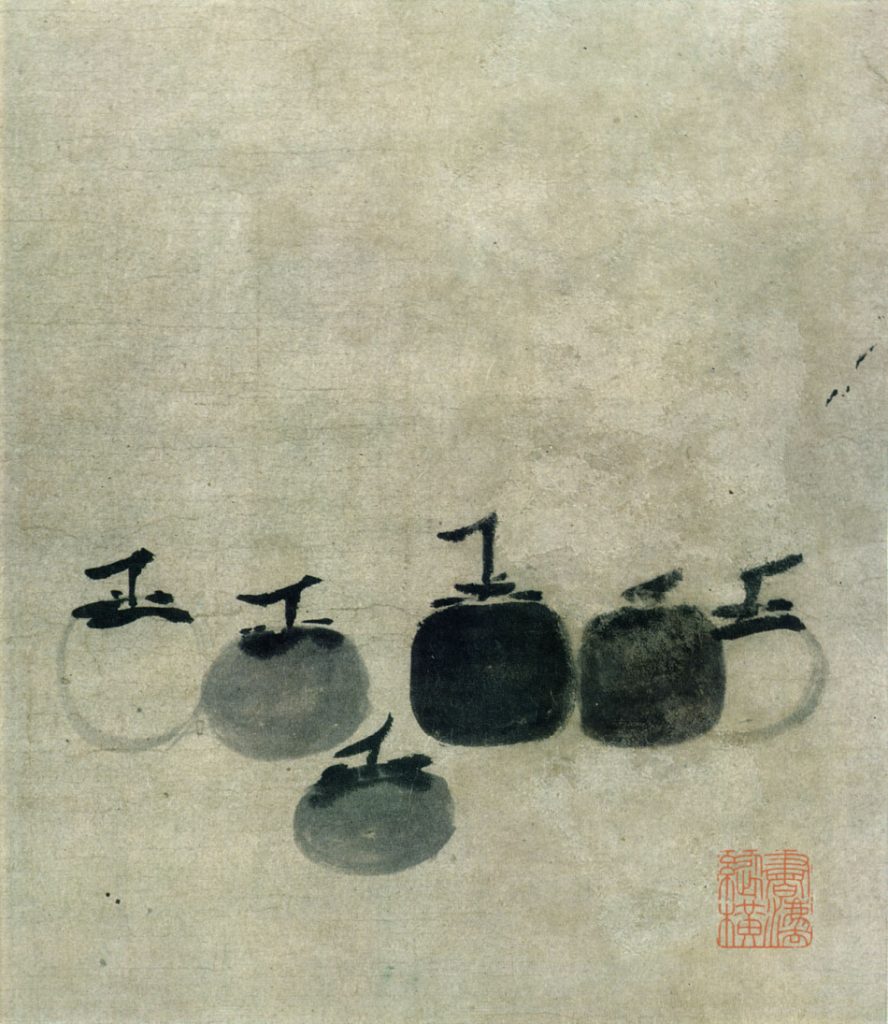
An attempt to explain the specific nature of the East Asian painting tradition leads us directly to the definitions of abstraction above. Of these, derived specifically, an explanation of the East Asian way of painting could be: The specific way of East Asian painting to represent things is a process of omitting details and transferring to something more general or simpler to focus attention on the essentials.
It is no exaggeration to say that the painting tradition of East Asia has been fully committed to abstraction! The aim of the local picturesque endeavor was and is the concentration of the design to the essentials.
But what is the essence in the view of the East Asian culture? First we have to clarify the essential concept from an ethnological point of view. One of the oldest still existing sources is the Daodejing 《道德经》 of Laozi 老子, which begins with a, in Western terms, rather surprising attempt of clarifying the essence, as we can read in the first verse of the first book:
“The essence that can be conceived, is not the essence of the incomprehensible.
The name that can be said is not the name of the Nameless.
Nameless is the eternal, is inside.
Named is the diversity, is outside.
Rest desireless, is to perceive inside.
Act desireful, is to remain outside.
The One and the Many are of the same origin, uneven in appearance.
Their identity is the miracle, the miracle of miracles, the gate of all miracles.”

This famous yet enigmatic prelude of the Daodejing approaches the concept of essence in the way of abstraction. Moreover, in line 1 and 2 Laozi explains that concretion is simply unusable to infer the essential, giving us his teaching in line 4, how the essence can be inferred: by abandoning the ego and practicing contemplation.
In this single verse, written between the 5th and 4th century B.D., we find those elementary principles, which the East Asian painting tradition is committed to since its birth. Painting there means searching for the essential on the way of contemplation. In the 4th verse of Daodejing, Laozi outlines his concept of essence even clearer:
“The essence is like the emptiness of a vessel.
Who evinces essence is like the emptiness and does not accumulate.
Empty it is still the vast womb of all things. (…)
Unknowing its origin, we realize:
It was before the beginning of everything.”
Emptiness is essence, teaches us the first philosopher of Daoism. It is the primal creative principle of all being. Already in the first verse Laozi also emphasizes the unity of nature (read: empty) and shape. Here he goes to the highest level, the hand with the Buddha’s teachings, as passed the Heart Sutra 《心經》:
“Form is emptiness, emptiness is form.”
According to Laozi, the highest form of abstraction is the essence, essence is emptiness. Following his argument, it is necessary to abstract the form to the extent that the essence can be felt in it. Form and emptiness build a unit, the contrast of the concrete and the abstract dissolves in a higher level of knowledge.
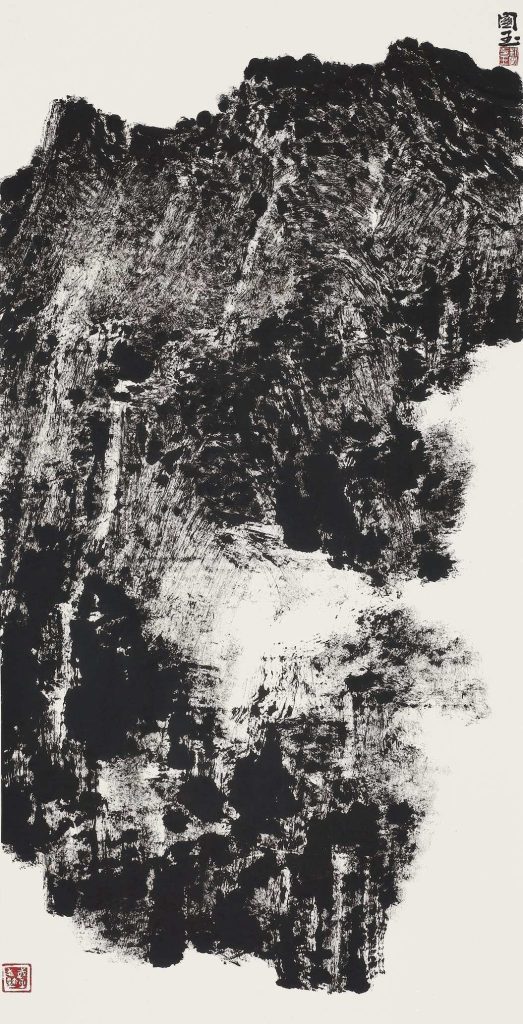
In fact, the East Asian painting has found its most elementary principle in the interplay of form and emptiness. Already the earliest samples of this art show us images or landscape symbols, freely composed into an empty background. On each step of its development, the interpenetration of form and emptiness increased further until the 13th century, in which the work of Chan 禅 painter reached almost totally abstract (i.e. non-representational) results. However, they never left the ground of representational painting completely.
The reason why this has obviously never been tried in East Asia is also due to the deep influence Daoism had on the painting tradition. For its development Daoism made use of even older sources of Chinese philosophy: the Yin and Yang Theory. There, the entire cosmos is conceived as an effect of the universal primal Qi-Energy, which formulated the law of all being as a perpetual flow between the polar primal forces of the negatives and positives. Its essence is change. No pole can be conceived without its counterpoint, the absolute is the relative. But not only Daoism and its precursors are the inspiration for this philosophy of life expressed by East Asian painting. Kongzi 孔子(lat. Confucius) the most influential philosopher of this cultural area also contributed to the dissemination of this point of view with his teachings. In a dispute with his students about the preference of a hotly – determined against a cautious – reluctant temperament his verdict is:
“Too much is just as wrong as too
little.”
The balance, the middle is it the ultimate goal. “China” itself, is explained in this way. Zhongguo 中国- the Middle Kingdom – is the Chinese name literally translated. Facing this clear self-understanding based on the benefit of harmony and balance, who wonders that painting emulates these ideals of its motherland? Qi Baishi 齐白石, the most important master of classical ink painting in the 20th century, described this attitude:
“Where examines the painter his picture of the world? On the border of the concrete and the abstract. What is too concrete, shows nothing but the visible reality, what is too abstract, deceives the world.”
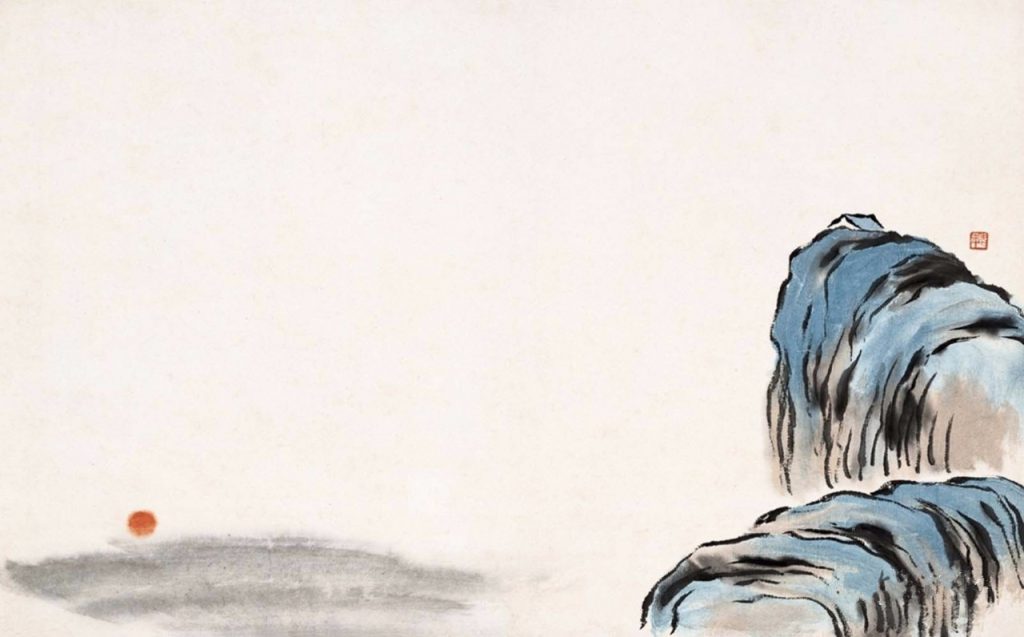
Finally, this view is also strengthened by Buddhism, the third power of the Chinese intellectual world, as we gather above from the quote of the Heart Sutra. It was the historical Buddha Siddharta Gautama himself, who, after years of senseless asceticism, had walked on his way to the highest knowledge by the “middle path “, as he later called and taught it.
Based on this understanding, up to modern times it has been obviously impossible for the East Asian soul to find self-expression in a completely non-representational way. Nevertheless, painters drove the reduction of form in the 13th century on a peak that compels our deep admiration until today. The results of the Chan painting seem partially so timeless and modern, that even to a trained eye it often may not be possible to distinguish historical from new works. This was made possible only after the artist and statesman Su Dongpo 苏东坡(1037-1101) proclaimed the final emancipation of the artist’s free spirit in painting of the 11th century. He coined the term Xieyi 写意 (literally: writing down an idea) as a paraphrase of expressionism, which is characterized by the reduction to a few expressive lines and lavurs in a spontaneous manner of painting. Xieyi borrowed the free and fluid brushwork from the calligraphic concept-style. The first protagonists of this movement were literati-officials, scholars and monks around Su Dongpo. This group was looking for its own self-understanding in opposition to commercial executed painting, done mainly by craftsmen and common people.
Particularly characteristic of the conservative spirit of East Asia is the way, in which scenic solutions of great masters of the past were used continuously over the centuries. In the spirit of Xie He’s sixth principle, by painting design elements, generally accepted results of abstraction were handed down and canonized. Textbooks like the Mustard Seed Garden 《芥子园画谱》 were widely spread, in which the individual design elements of Chinese painting such as mountains, trees, grasses, flowers, figures, etc. were explained on the basis of classical models of the great masters. These could be summarized as set pieces and endlessly varied by subsequent generations of artists as a recipe, of course always with the same ingredients. The advantage of this typed models is their universal applicability. Human mages, for example, do not meet any high expectations of an individual and correct physiognomy. It extends the traditional representation of the type, which is enough for the viewer to understand the information of the image. An abstract form, handed down from the ancient masters, automatically finds the acceptance of the artist as well as the audience. The disadvantage of this often stereotyped imitation is obvious. While it makes satisfying results in painting easy to reach even for little creative minds on the one hand, on the other hand the slavish adherence to traditional modes of representation often paralyzed the development of new styles and forms of expression.
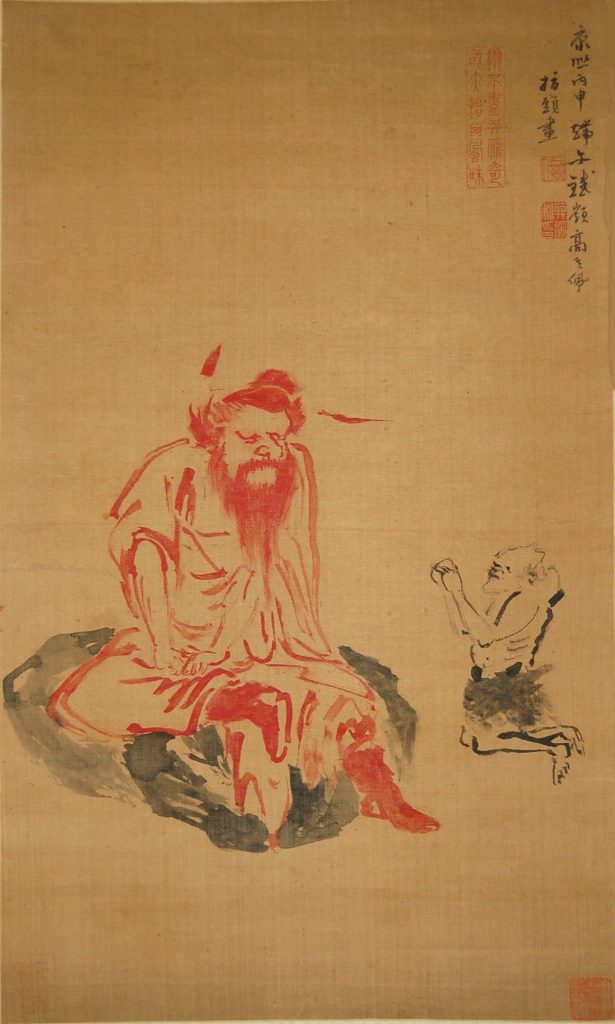
However, this dominance of orthodox tendencies in Chinese painting was also repeatedly penetrated by individualistic artists from time to time, who rejected any convention. One of the most important representatives of these individuals was Shitao 石涛 (1642 – about 1707). He was the first painter openly declared his opposition to traditional laws of painting and went his own path of abstraction, which he called Yihua 一画 (One Stroke Painting). In his Treatise of the Monk Bitter Melon 《苦瓜和尚画语录》 we read about the method of Yihua:
“In the very beginning there was no method. The primordial chaos still had no differences. As the primordial chaos began to have differences, the method originated. How do it arise? It originated from the one stroke (Yihua). This one stroke is that from which all phenomena arise. (…) A method of non – methodology was developed with the introduction of the One Stroke Method. This is a method that involves all the methods in it.”
His contemporary Gao Qipei 高其佩 (1672-1734) took an even more radical way in which he gave up the brush and painted only with his fingers. The aim of this extreme reduction of the media was to overcome any convention, to let the creative spirit of the artist come as directly as possible in spontaneous expression.
It may be typical for the very traditional East Asian nations that Gao Qipei could justify this shift away from the primacy of the brush by going back to ancient models themselves. We know already from the 7th century about first attempts of using the fingers instead of the brush for a spontaneous, gestural painting style. However, only since Gao Qipei, some followers started to hand down finger painting till the present, even taking influence on the neighboring countries of Korea and Japan.
Reduction of the media to focus on the essentials is finally documented in East Asian painting by the widespread abandonment of color. While the monochrome display has been used traditionally for sketches and studies in anticipation of a colored masterpiece in the West, the exact opposite development took place in East Asia. In the 9th Century, the monochrome illustration in black ink began to enforce after a long development of polychrome painting that lasted for centuries. The conviction that the black ink not only replaces color completely but that monochrome painting ultimately attains the summit of abstraction, reflects the philosophical foundations of this art. Starting from the idea of unity of their philosophical sources, it seems quite logical to represent the world and its phenomena by a single shade.
In summary, we note that the East Asian painting is devoted to abstraction from its very beginnings on. China was the first civilization, which propagated a free-spirited expressionism in painting and was able to continue this tradition in an unbroken line to modern times. Behind this phenomenon we recognize the teachings of Daoism, Buddhism and Confucianism as its foundation and driving force. Reduction and typing of the form, discarding color and in the extreme even the brush demand the ability of the painter to abstract by voluntary restriction of funds. In his choice of technique he is in a tension between old traditions and individualistic freedom. Where he succumbs to the convention, he often leaves the path of artistic self-determination. Where he sums up the courage to individual shapes, he often reaches results of timeless size and depth.
Read the full magazine
